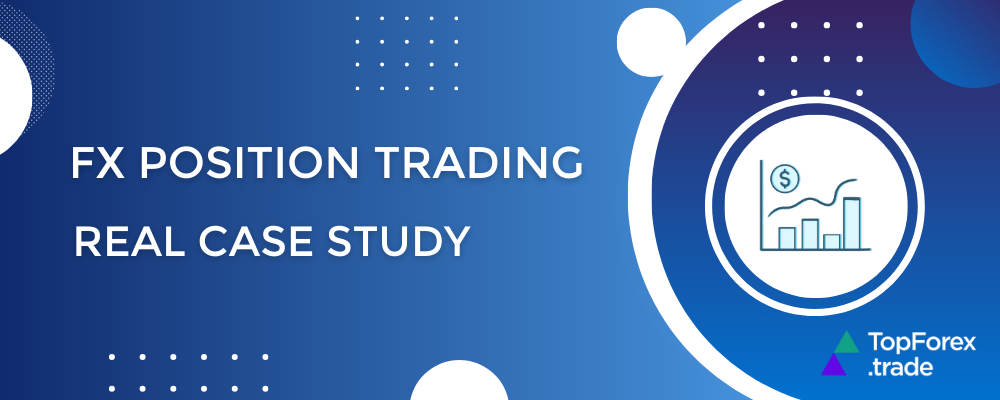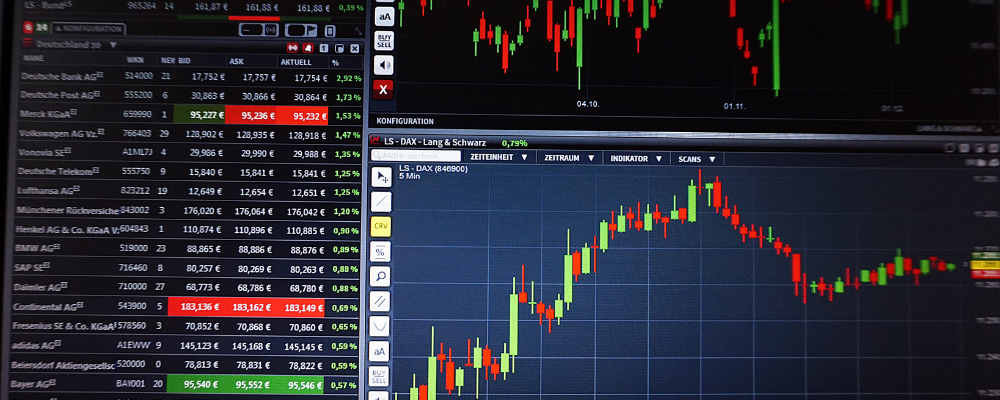Mastering FX position trading: proven strategies and best brokers

Position trading is a long-term Forex strategy where traders hold positions for weeks, months, or even years, aiming to capitalize on major market trends. Unlike day trading or swing trading, position trading relies heavily on fundamental analysis, macroeconomic trends, and key technical indicators. In this article, we’ll break down what Forex position trading is, explore real-life examples, and key indicators used by professionals, and analyze a real case study. Plus, we’ll highlight the top FX brokers suited for this strategy.
What is FX position trading?
Forex position trading is a long-term strategy where traders hold currency positions for weeks, months, or even years, aiming to profit from major market trends. Unlike short-term strategies like day trading or scalping, which focus on small price movements, position trading requires patience and a strong understanding of economic and market fundamentals.
Position traders don’t react to daily price fluctuations but instead base their trades on macroeconomic trends, central bank policies, and global events that influence currency prices over time. This approach is often preferred by traders who don’t have time to monitor the market constantly and are willing to wait for substantial price movements.
How does position trading work?

Position trading aims to buy (go long) or sell (go short) a currency pair based on long-term trends. This strategy requires a deep understanding of economic indicators and technical analysis to identify strong trade setups. Position traders often analyze interest rate decisions, inflation reports, employment data, and geopolitical developments before entering a trade.
For example, suppose a trader expects the U.S. Federal Reserve to raise interest rates. In that case, they may go long (buy) USD against a weaker currency like the Japanese yen (JPY), anticipating that the higher interest rate will attract investors and strengthen the U.S. dollar.
FX position trading examples
To better understand position trading, let’s look at a few real-world scenarios where traders could have made long-term profits:
1. USD/JPY and U.S. interest rate hikes (2015-2018)
- What happened? The U.S. Federal Reserve raised interest rates multiple times between 2015 and 2018, making the USD more attractive to investors.
- How traders reacted: Many position traders went long (bought) USD/JPY, expecting the dollar to appreciate against the yen.
- Outcome: USD/JPY rose from around 116 in early 2015 to over 125 in mid-2015, providing long-term traders with profitable opportunities.
2. EUR/USD and European economic slowdown (2014-2015)
- What happened? The European Central Bank (ECB) launched a stimulus program to support the struggling Eurozone economy. Meanwhile, the U.S. economy was growing steadily.
- How traders reacted: Many traders shorted (sold) EUR/USD, expecting the euro to weaken against the U.S. dollar.
- Outcome: The euro fell from around 1.39 to 1.05 over a year, yielding significant profits for those who held short positions.
3. AUD/USD and commodity price boom (2020-2021)
- What happened? Commodity prices surged after the COVID-19 market crash, benefiting commodity-exporting countries like Australia.
- How traders reacted: Traders went long on AUD/USD, anticipating a strong Australian dollar.
- Outcome: The AUD/USD pair climbed from 0.55 in March 2020 to 0.80 by early 2021.
Fundamental analysis and macroeconomic trends in position trading

Since position trading relies on long-term trends, fundamental analysis plays a crucial role in identifying profitable trades. Here are the key economic factors position traders monitor:
➡ Interest rates – Higher interest rates generally strengthen a currency because they attract foreign investors looking for better returns.
➡ Inflation and economic growth – A strong economy usually leads to currency appreciation, while high inflation can weaken a currency.
➡ Geopolitical events – Trade wars, political instability, and global conflicts can impact currency movements.
➡ Central bank policies – Actions by major banks like the U.S. Federal Reserve, European Central Bank, and Bank of Japan significantly influence currency trends.
➡ Commodity prices – Currencies of commodity-exporting countries (AUD, CAD, NZD) are highly influenced by oil, gold, and other raw material prices.
Key technical indicators for position trading
While fundamental analysis helps traders decide which currency pairs to trade, technical indicators help them determine the best time to enter or exit a trade. Some essential indicators for position traders include:
➡ 200-Day Exponential Moving Average (EMA) – Helps confirm the long-term trend direction. If the price is above the 200-day EMA, the trend is bullish; if below, the trend is bearish.
➡ Bollinger Bands – Measures market volatility and helps identify overbought and oversold conditions. Position traders use it to time their entries and exits.
➡ Relative Strength Index (RSI) – Determines whether a currency pair is overbought (above 70) or oversold (below 30), signaling potential reversals.
➡ MACD (Moving Average Convergence Divergence) – Identifies trend strength and potential entry points by analyzing moving averages.
Position trading case study: GBP/USD and Brexit (2016-2020)

Background:
In June 2016, the United Kingdom voted to leave the European Union (Brexit), causing significant uncertainty in the financial markets. The British pound (GBP) plummeted as investors feared economic instability. Over the next few years, Brexit negotiations and political turmoil heavily influenced GBP/USD price movements, creating a strong long-term downtrend.
Trade setup:
📰 Macroeconomic factors:
- Brexit referendum (2016): The unexpected “Leave” vote triggered a sharp decline in GBP/USD.
- Political uncertainty (2017-2019): Delayed Brexit negotiations and changing UK leadership kept GBP under pressure.
- Economic impact: Investors feared trade barriers, a weaker UK economy, and declining foreign investments.
- U.S. Dollar strength: At the same time, the U.S. economy was recovering, and the Federal Reserve raised interest rates, making the USD stronger.
💻 Technical analysis:
- 200-day EMA: GBP/USD remained below the 200-day EMA for most of the period, confirming a strong downtrend.
- MACD indicator: Showed continuous bearish momentum, reinforcing the long-term selling trend.
- Support and resistance: Key support levels were broken multiple times, signaling further declines.
📊 Execution and outcome:
- Many position traders shorted GBP/USD after the Brexit vote in mid-2016 when the price dropped from 1.50 to 1.30 in a few days.
- As Brexit uncertainty continued, traders held their short positions as GBP/USD kept declining, reaching a low of 1.20 in late 2016.
- Throughout 2017-2019, GBP/USD remained volatile, but each political setback pushed the pound lower.
- By March 2020 (during the COVID-19 market crash), GBP/USD hit 1.14, marking one of its lowest levels in decades.
- Traders who held short positions from 2016 to 2020 could have gained thousands of pips in profit.
✍ Lessons from this case study:
- Macroeconomic events can drive long-term trends: Brexit uncertainty weakened GBP/USD for years.
- Political factors matter: Elections, policy changes, and trade agreements impact currency markets.
- Combining fundamentals with technicals improves trade accuracy: The bearish fundamentals aligned with key technical signals, confirming the long-term downtrend.
The best brokers for Forex position trading
For position trading, it’s crucial to choose a broker that aligns with your trading style and goals. Here are some of the top brokers for position trading:
HF Markets (HotForex) FX trading
HF Markets – Known for its low swap rates, strong liquidity, and advanced charting tools, HF Markets is an excellent choice for position traders who prioritize research and long-term analysis.
AvaTrade FX trading
AvaTrade – AvaTrade offers competitive spreads and a broad range of macroeconomic analysis tools, making it suitable for traders who want to leverage both technical and fundamental analysis.
Exness FX trading
Exness – With flexible leverage options and tight spreads, Exness is a good option for position traders. It offers minimal overnight fees, which is crucial for holding trades for extended periods.
XTB FX trading
XTB – XTB provides access to in-depth educational resources and market analysis, along with a user-friendly platform. This makes it a great broker for traders seeking to hold positions over the long term while staying informed about market trends.
BlackBull FX trading
BlackBull Markets – BlackBull Markets offers tight spreads, strong liquidity, and excellent customer support, making it a great choice for position traders looking for a broker that supports long-term trades with minimal fees.
Related articles:
Forex position trading - FAQ